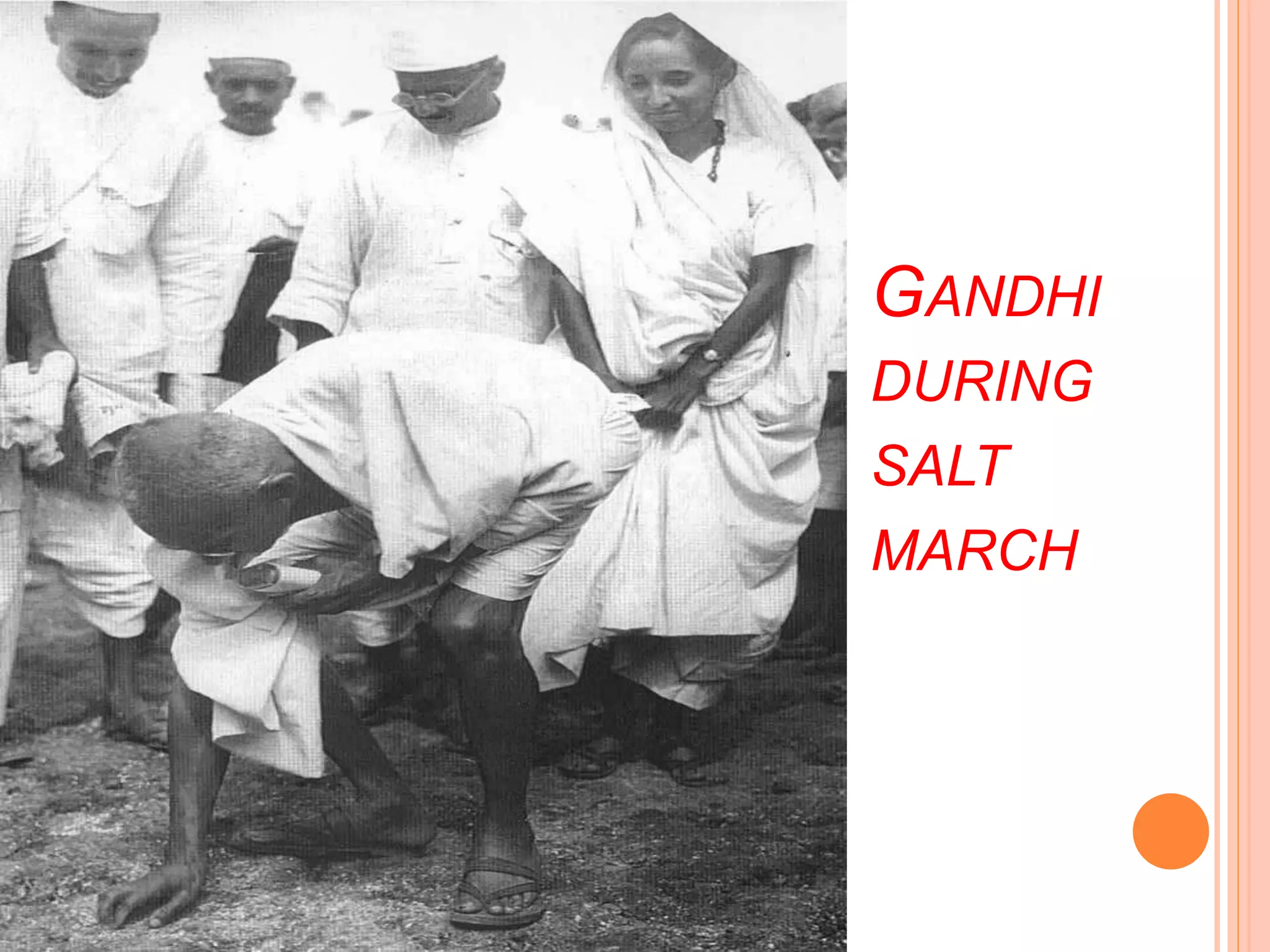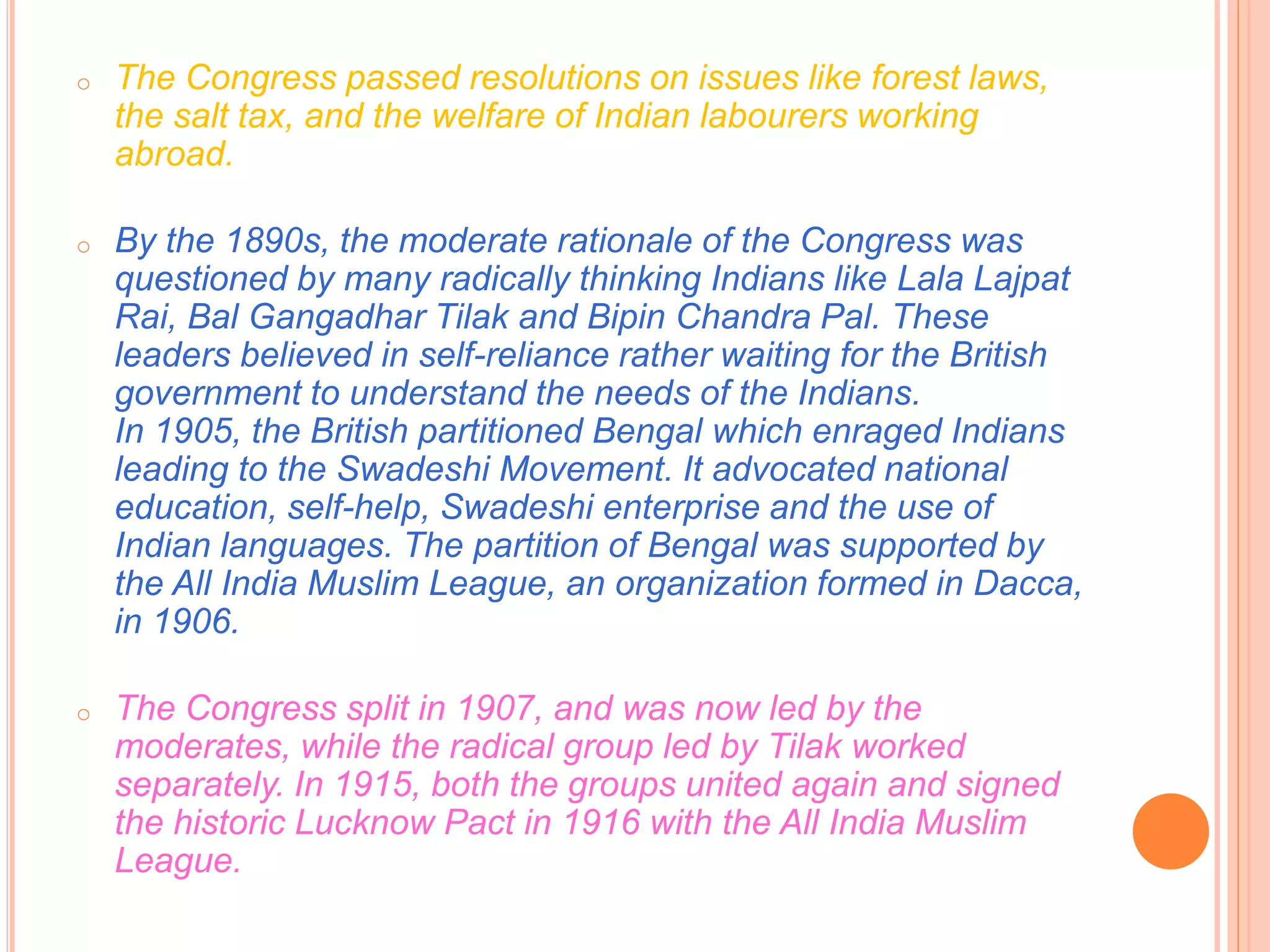The document outlines the key developments in the Indian national movement, detailing the impacts of British rule and the emergence of various political associations leading up to India's independence. It highlights significant figures like Mahatma Gandhi, Bhagat Singh, and Lala Lajpat Rai, and their contributions, along with the rise of movements like the Swadeshi Movement and the Non-Cooperation Movement. Additionally, it discusses the government's oppressive acts and the growing discontent among Indians, culminating in a unified struggle for self-governance and freedom.


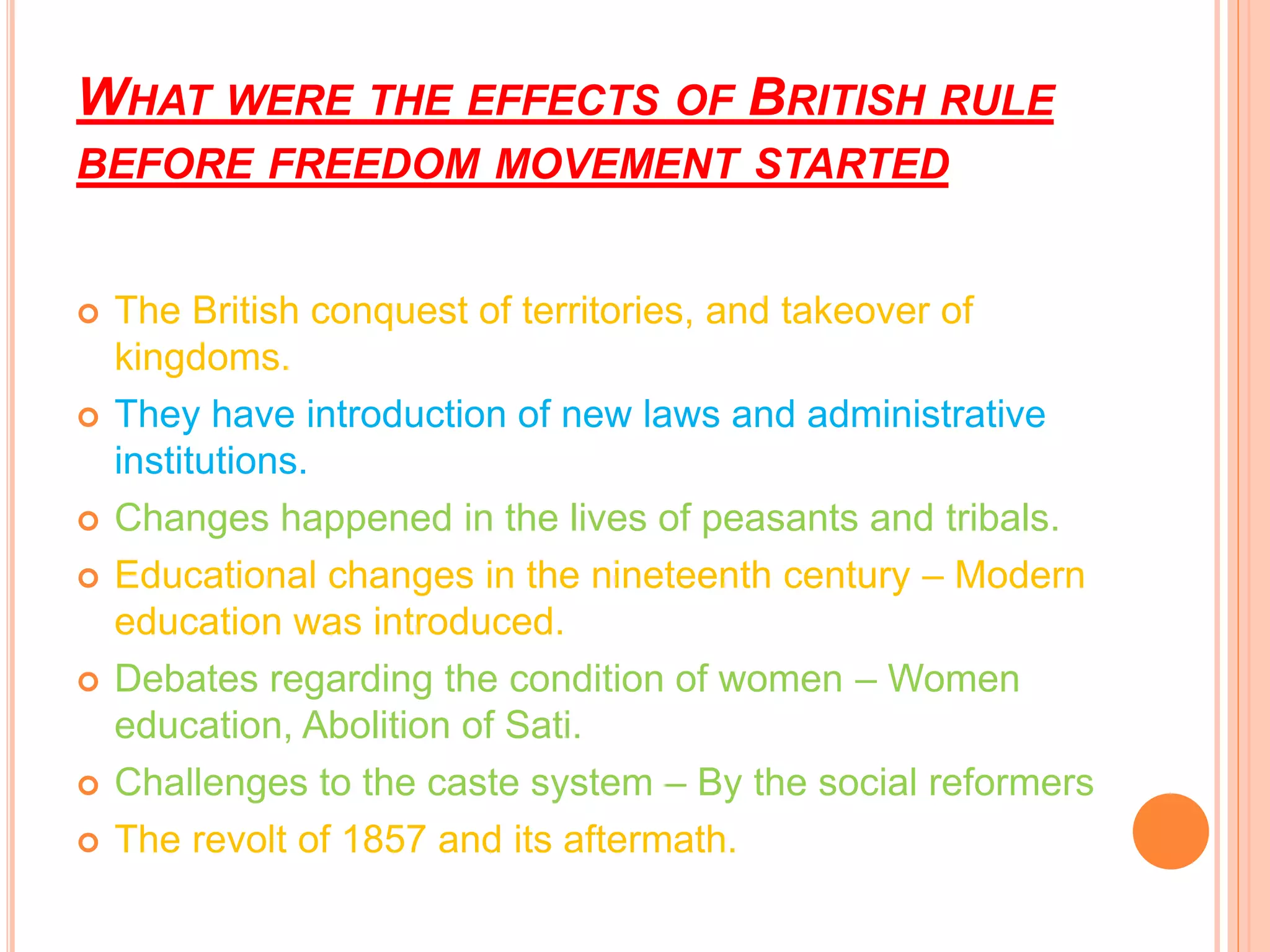
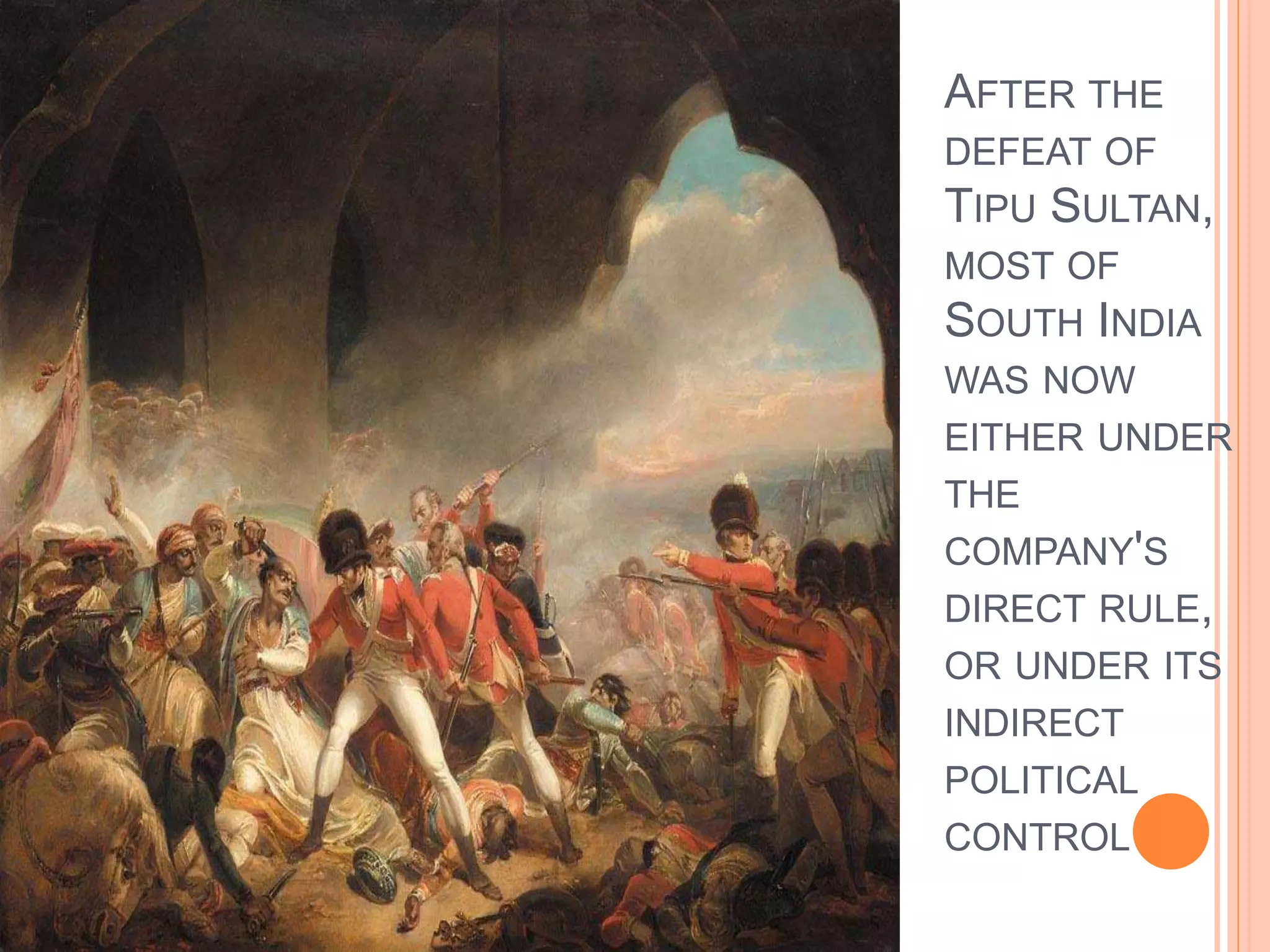
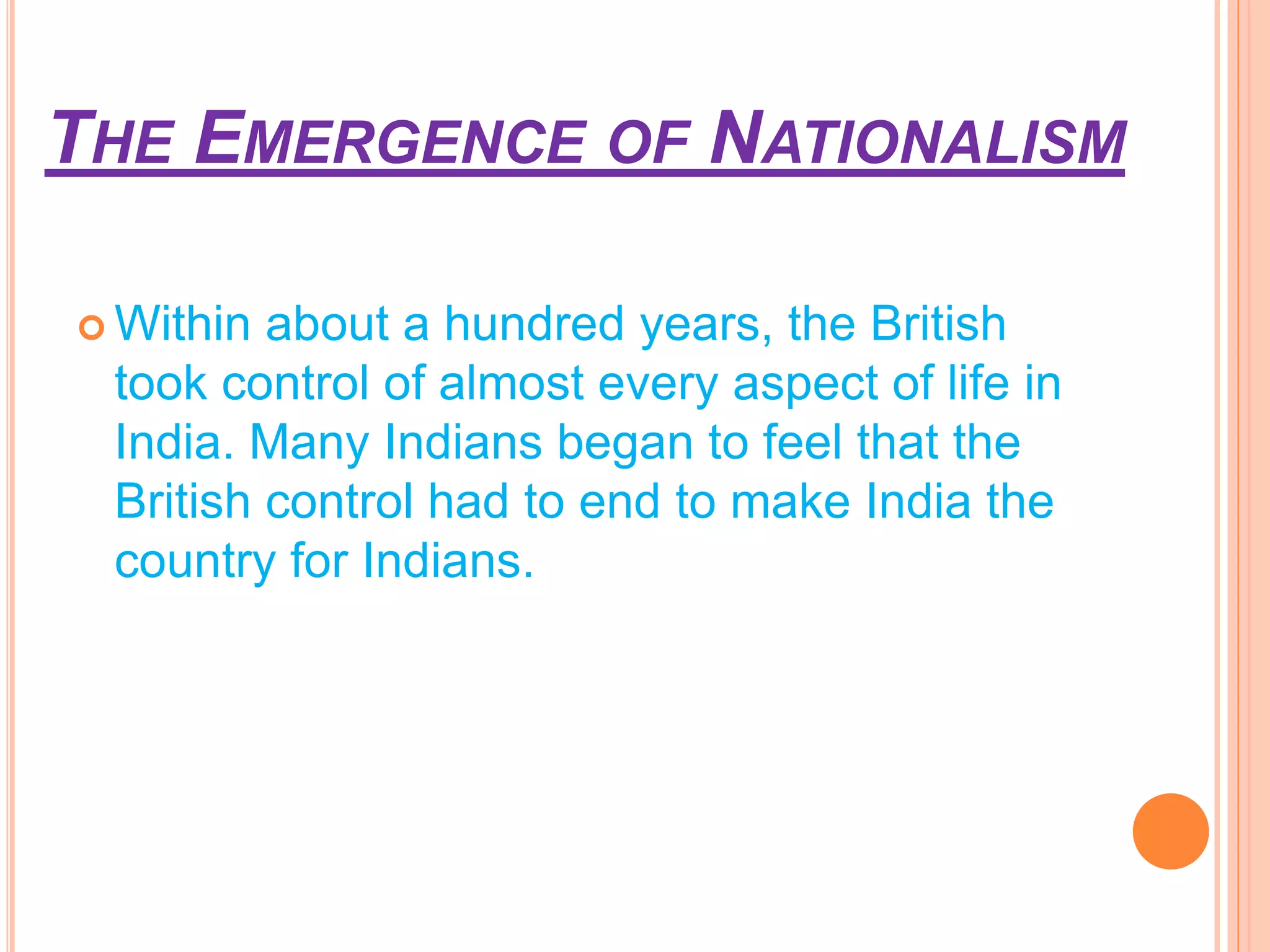
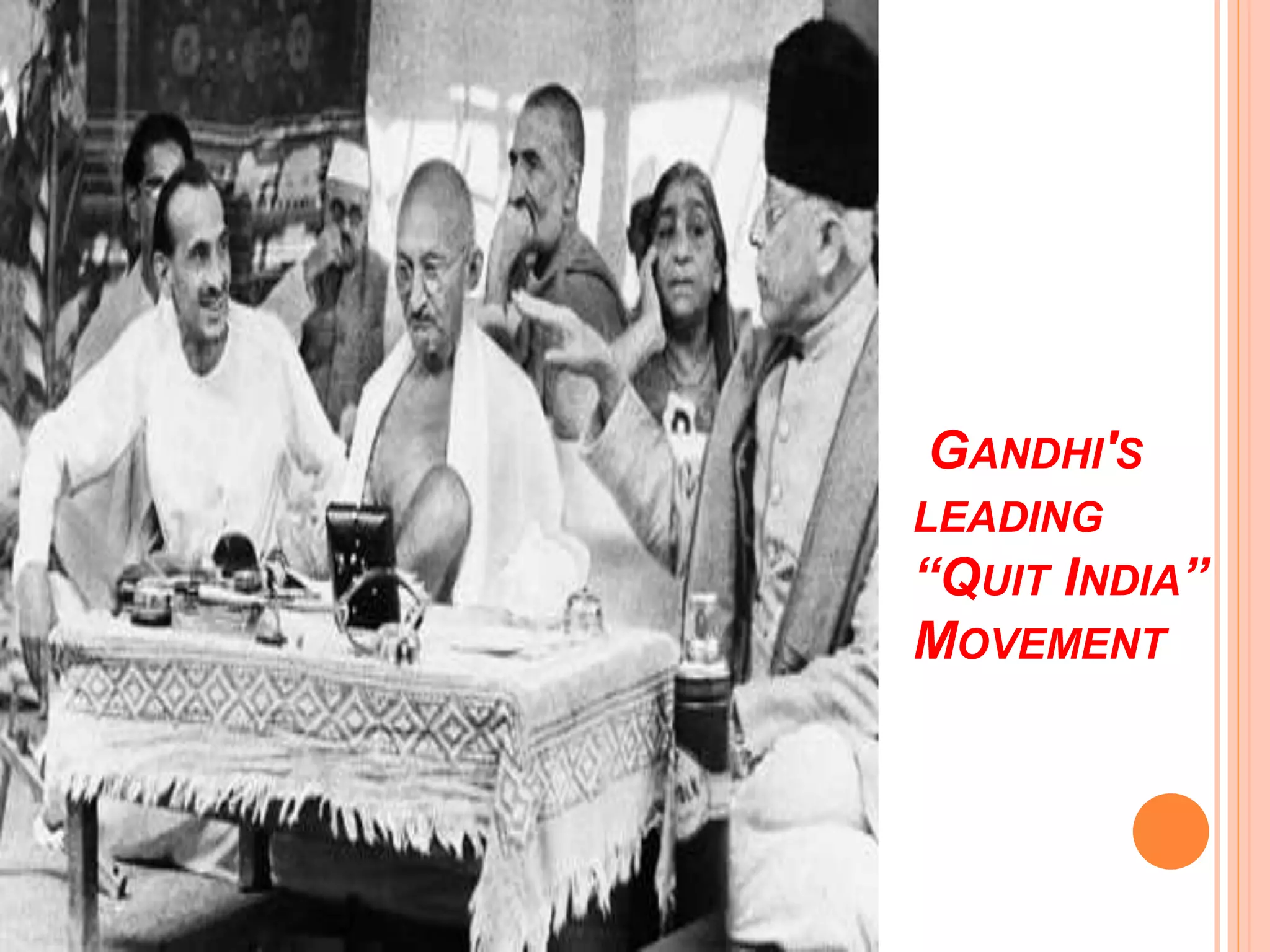
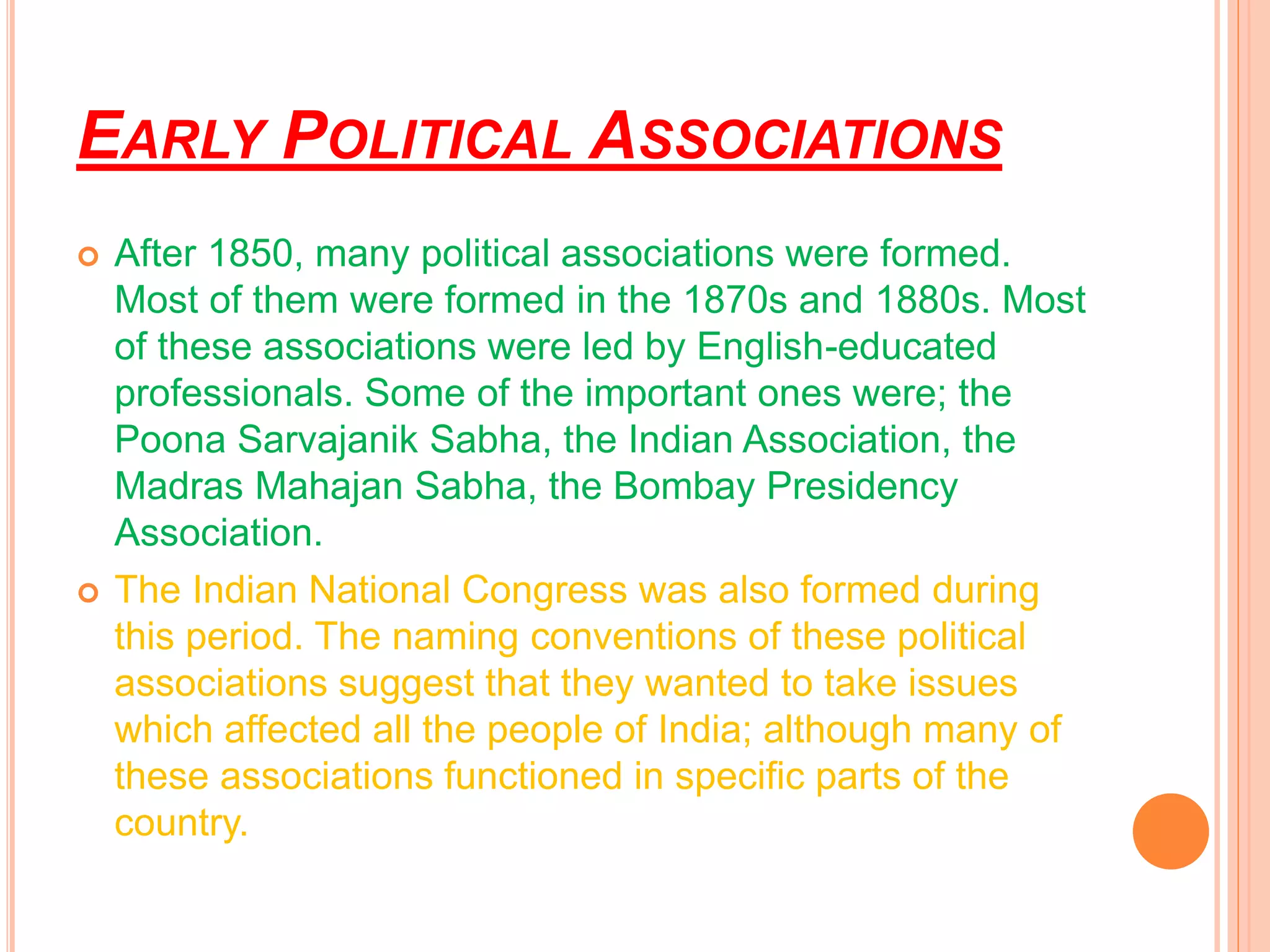

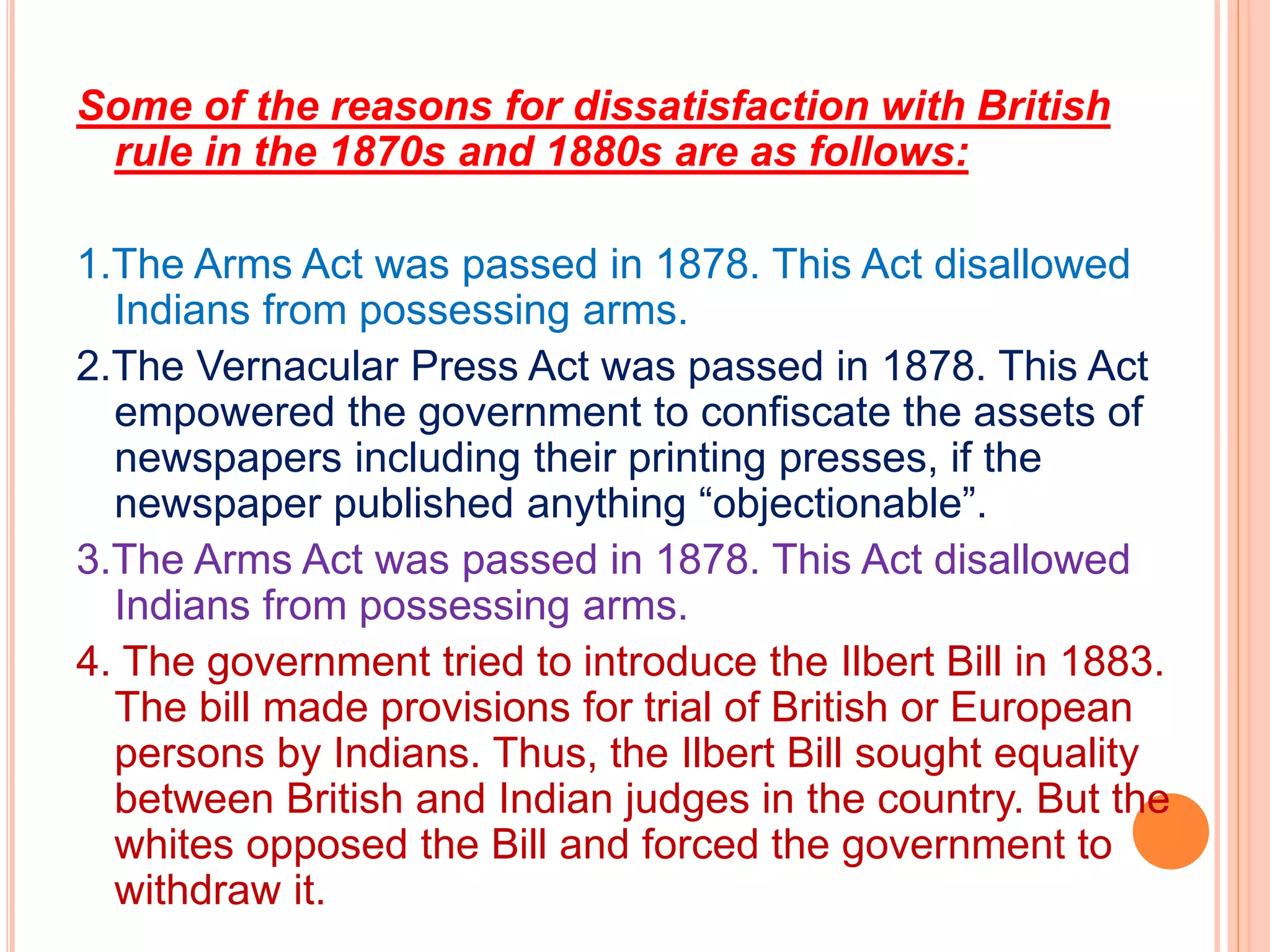

![THE INDIAN NATIONAL CONGRESS [INC]
The Indian National Congress was established in
1885 at Bombay. In its first meeting at Bombay, 72
delegates from all over the country were present.
The early leadership was mainly composed of
people from Bombay and Calcutta. Dadabhai
Naoroji, Pherozeshah Mehta, Badruddin Tyabji, W.
C. Bonneryji, Surendranath Banerji, Romesh
Chandra Dutt, S. Subramania Iyer, etc. were part of
the early leadership of Congress.](https://image.slidesharecdn.com/themakingofnationalmovementbyarjun-160110085048/75/The-making-of-national-movement-1870s-1947s-11-2048.jpg)





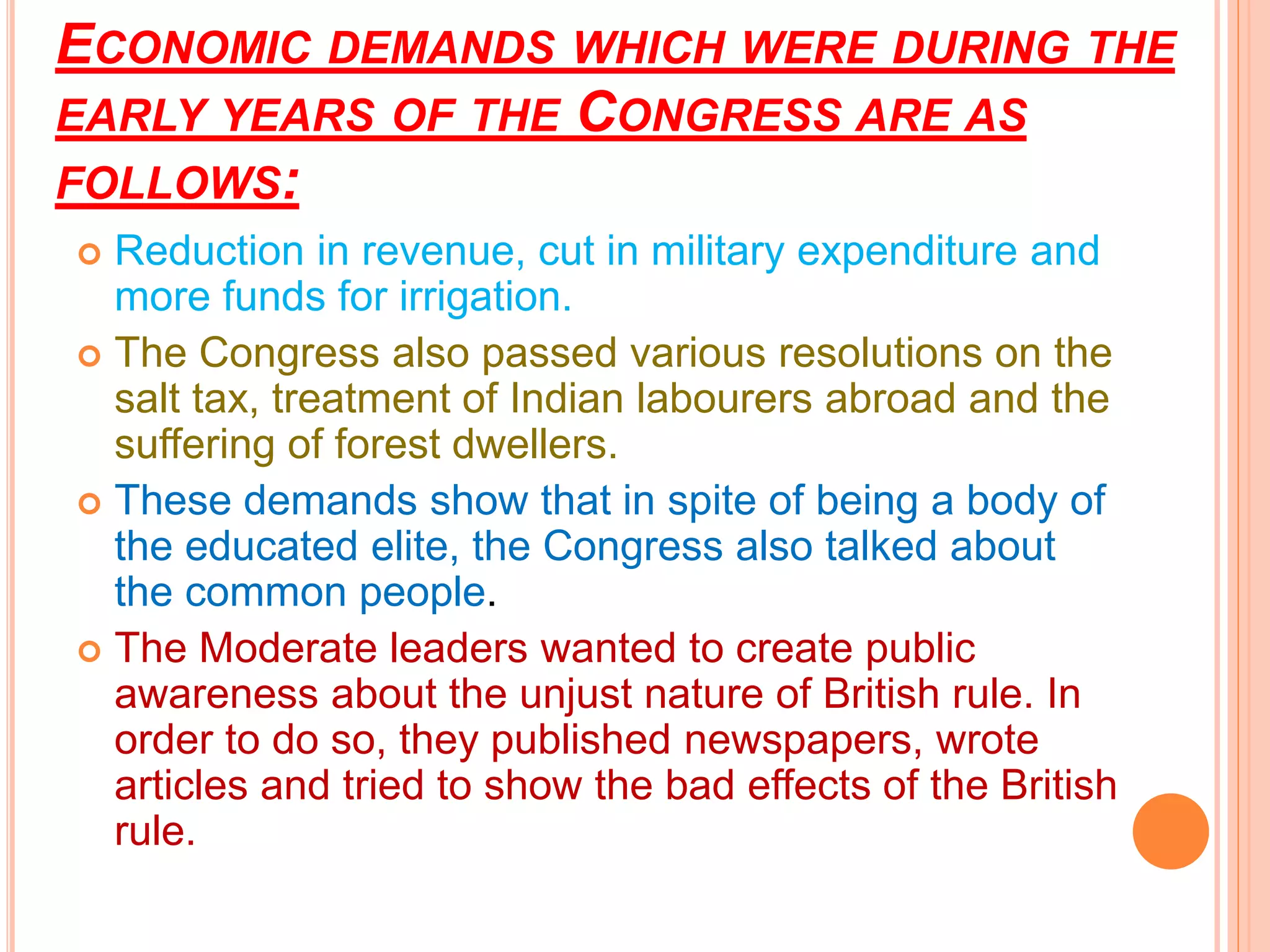
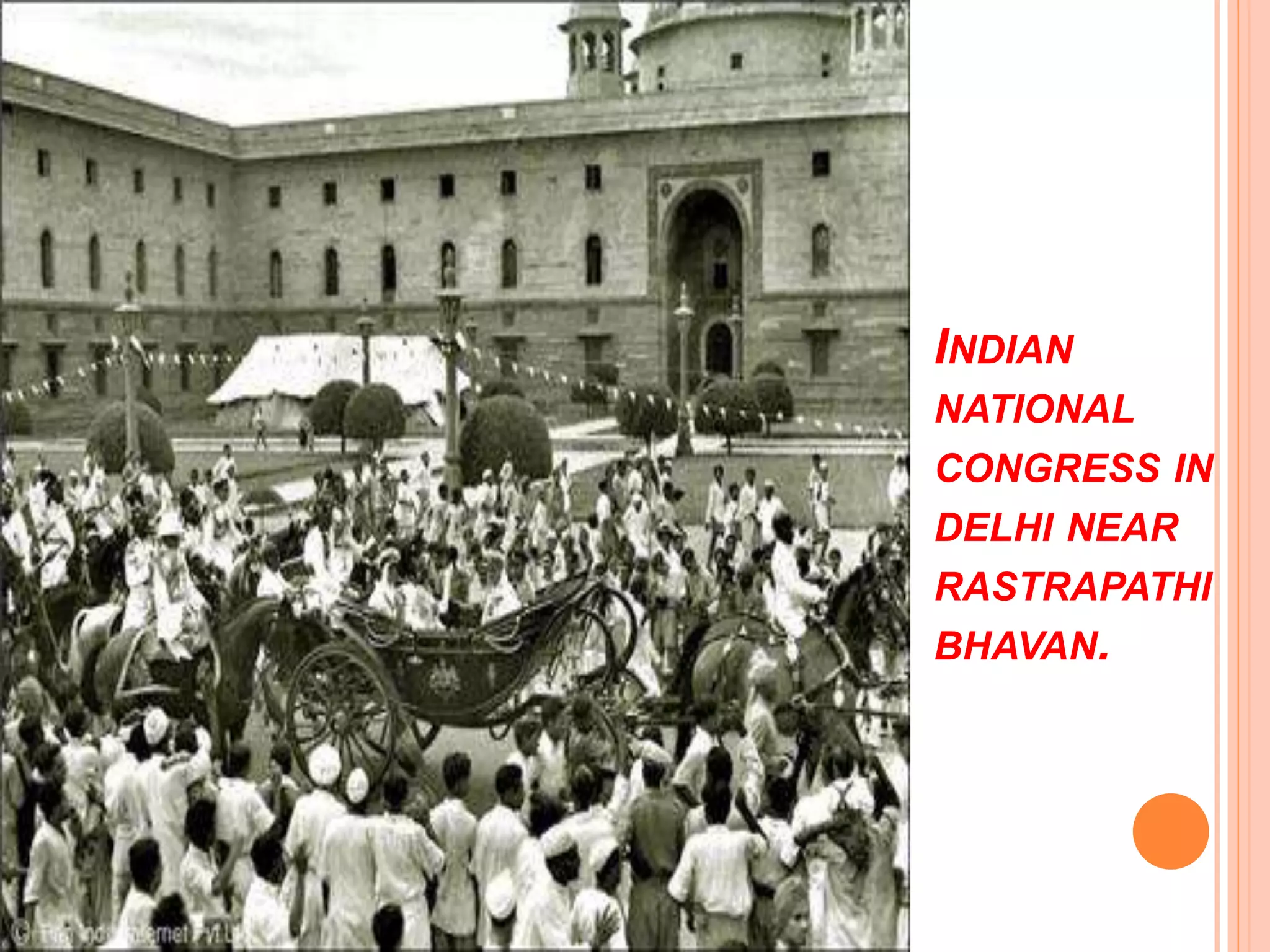




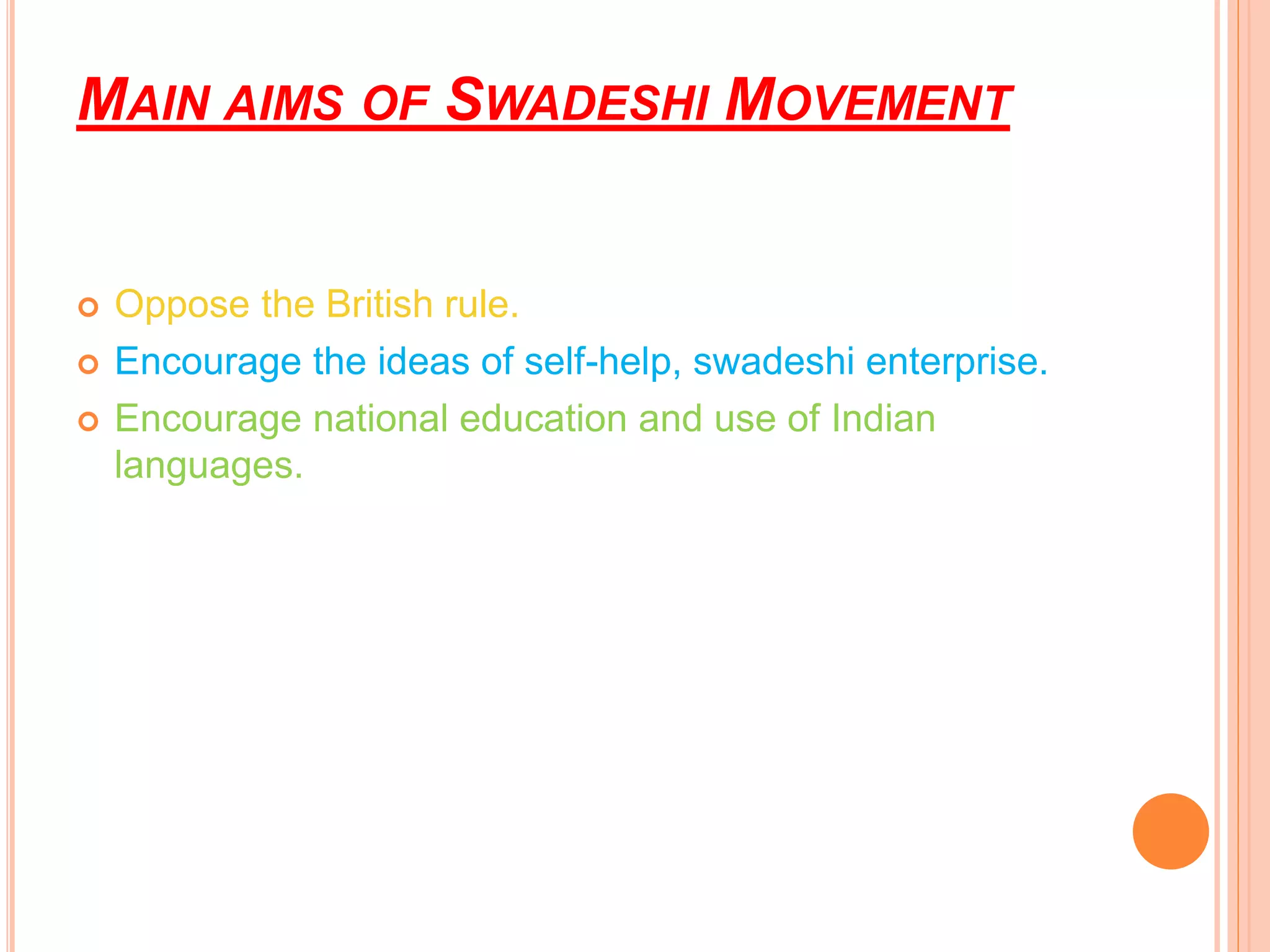






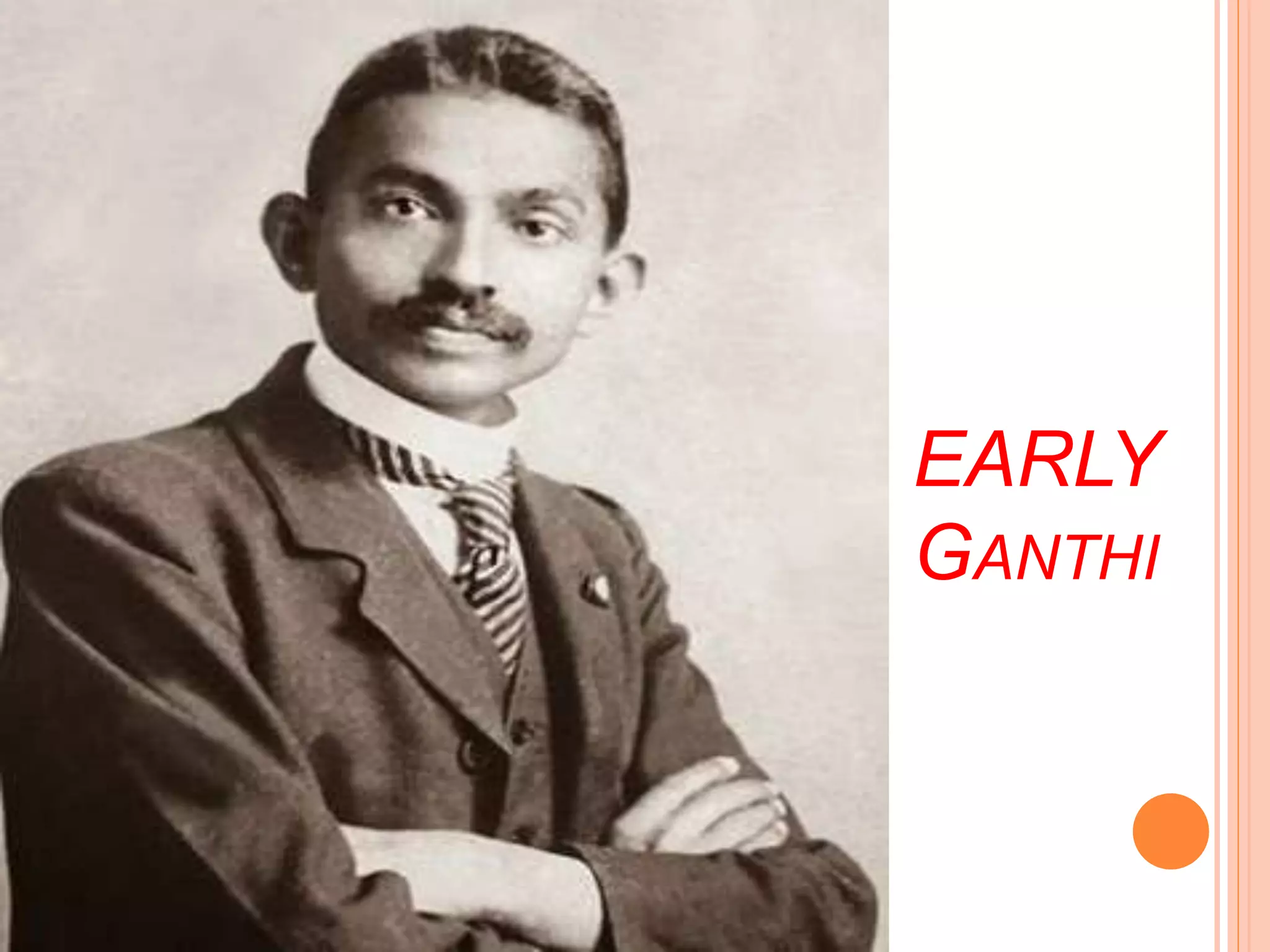



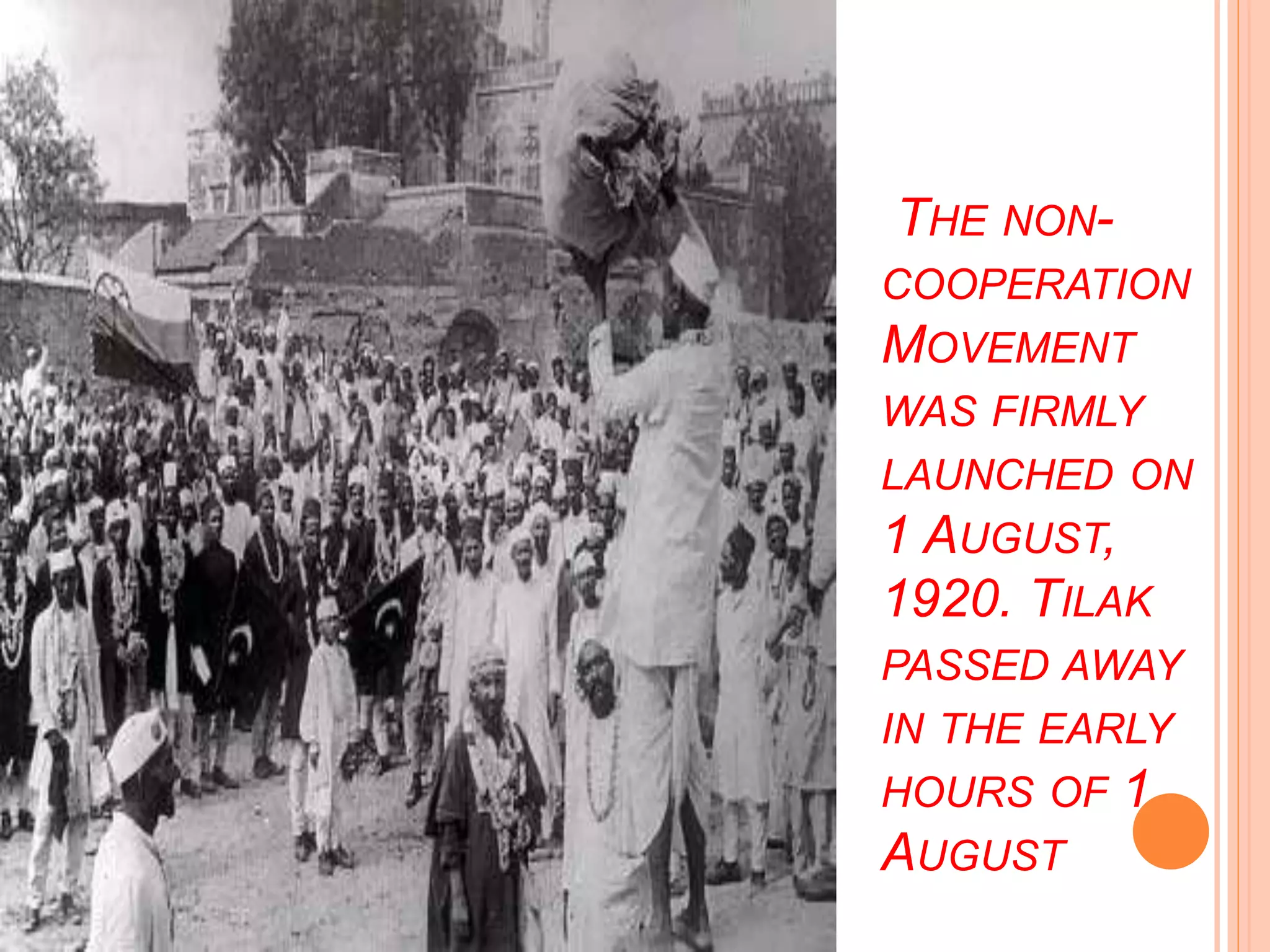

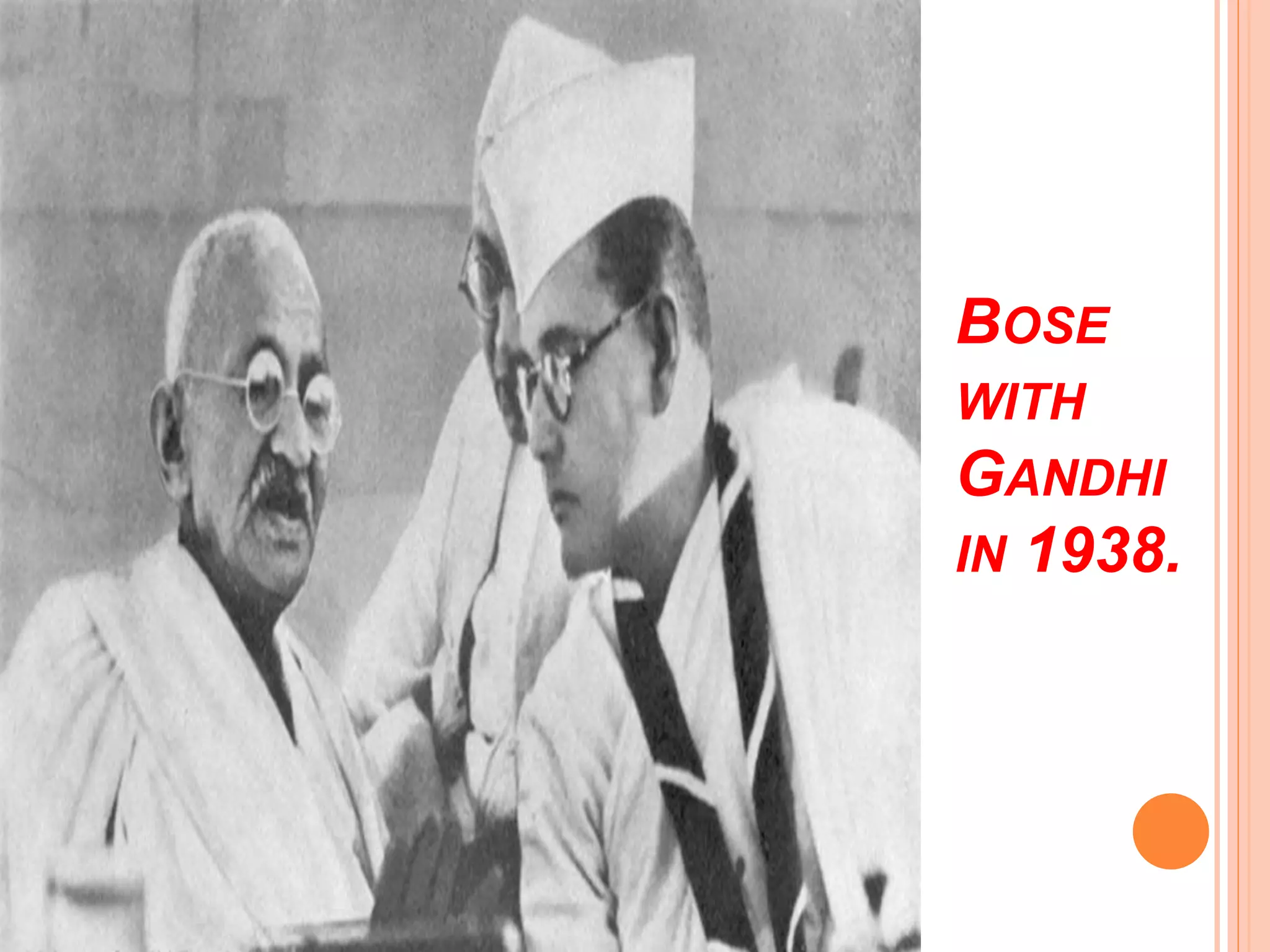
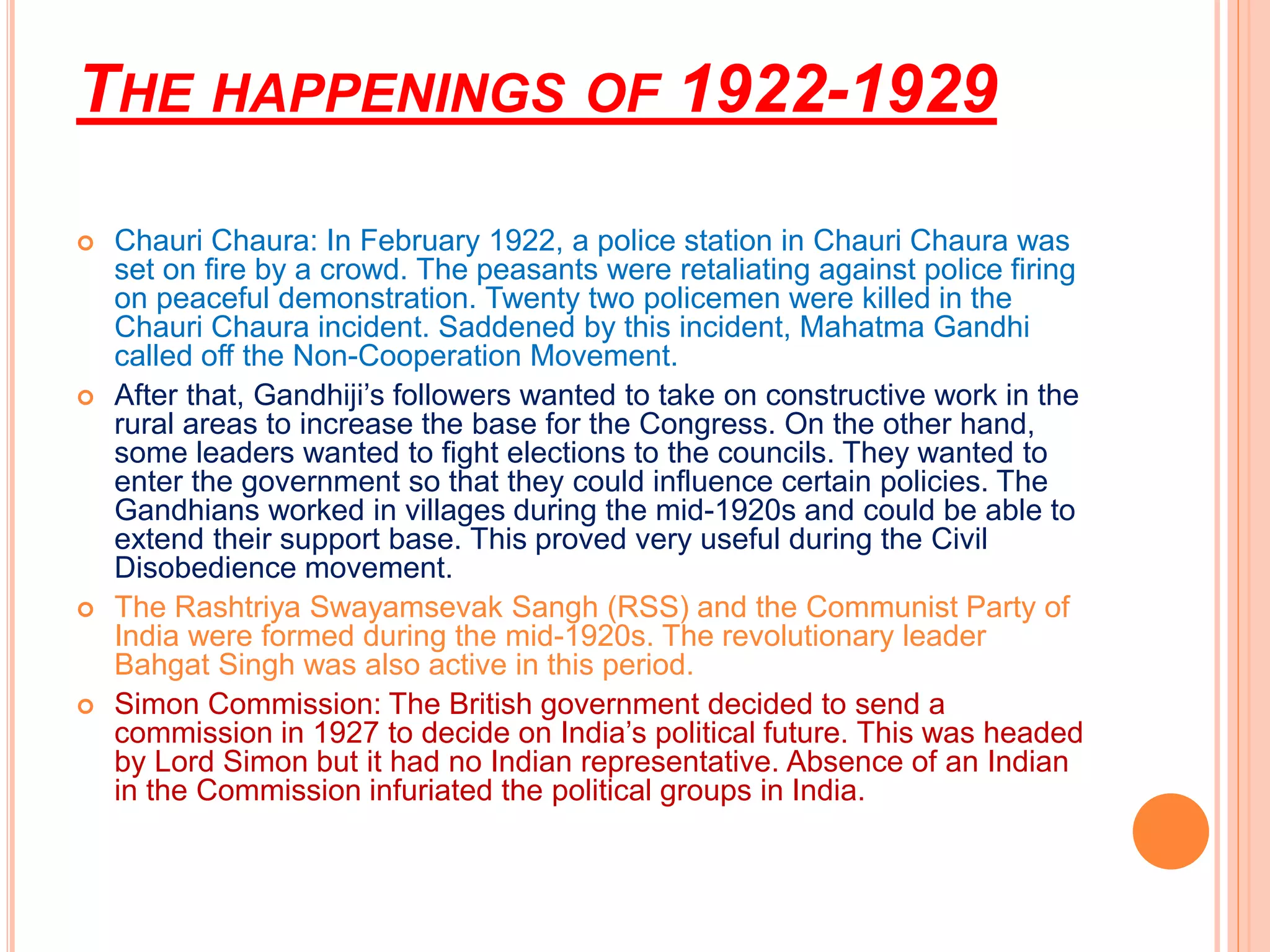



![INDIAN NATIONAL ARMY [INC]
The entry of India into the war was strongly opposed by Subhas
Chandra Bose, who had been elected President of the Congress in
1938 and 1939, but later resigned due to differences in opinion with
Gandhi. However, he remained a member of the Congress throughout
his life. Bose then founded the All India Forward Bloc. In 1940, a year
after war broke out, the British had put Bose under house arrest in
Calcutta. However, he escaped and made his way
through Afghanistan to Nazi Germany to seek Hitler and
Mussolini's help for raising an army to fight the British.
The Free India Legion comprising Erwin Rommel's Indian POWs was
formed. However, in light of Germany's changing fortunes, a German
land invasion of India became untenable and Hitler advised Bose to go
to Japan and arranged for a submarine. Bose was ferried to Japanese
Southeast Asia .Its aim was to reach India as a fighting force that
would build on public resentment to inspire revolts among Indian
soldiers to defeat the British raj.](https://image.slidesharecdn.com/themakingofnationalmovementbyarjun-160110085048/75/The-making-of-national-movement-1870s-1947s-41-2048.jpg)


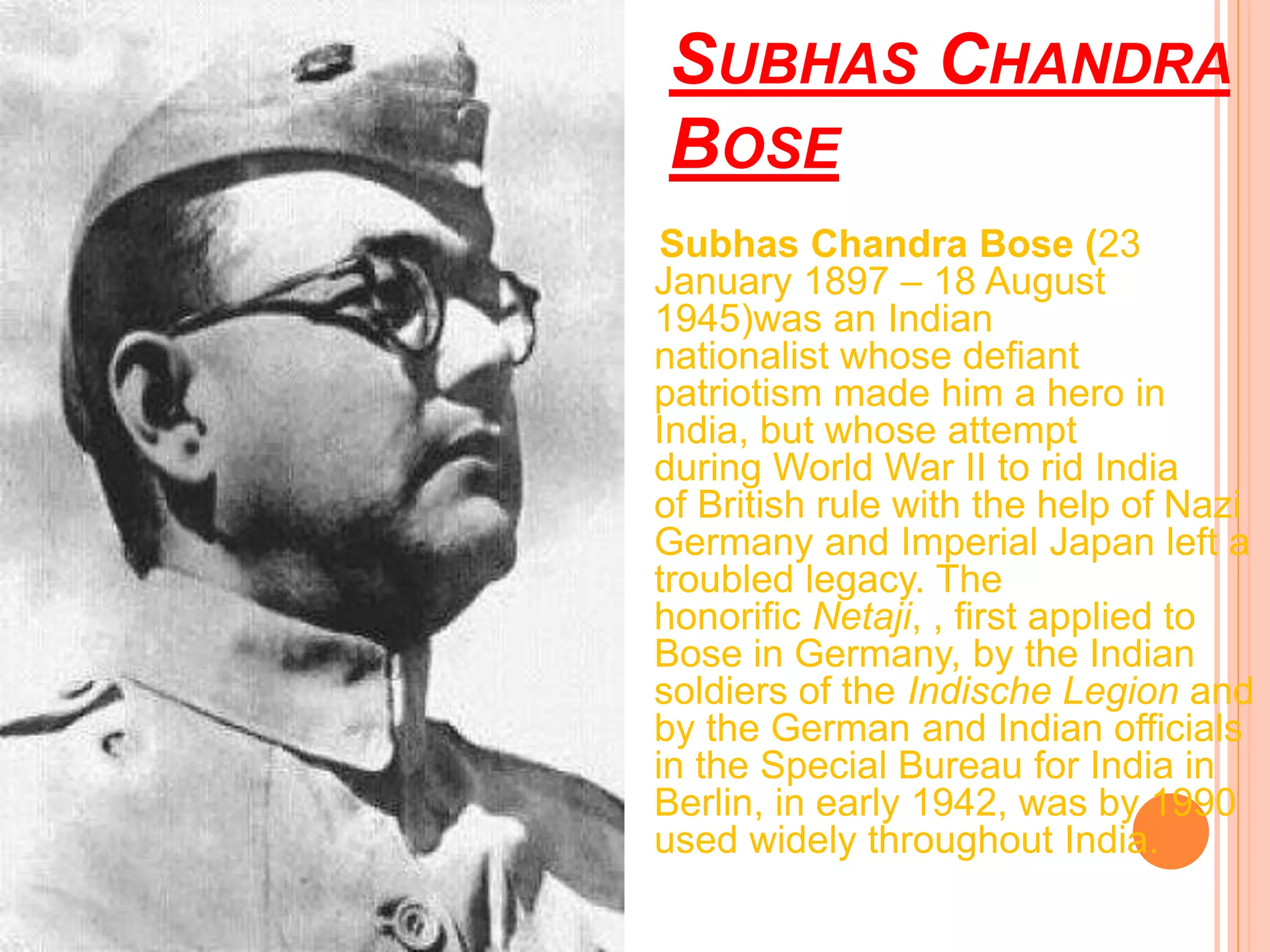

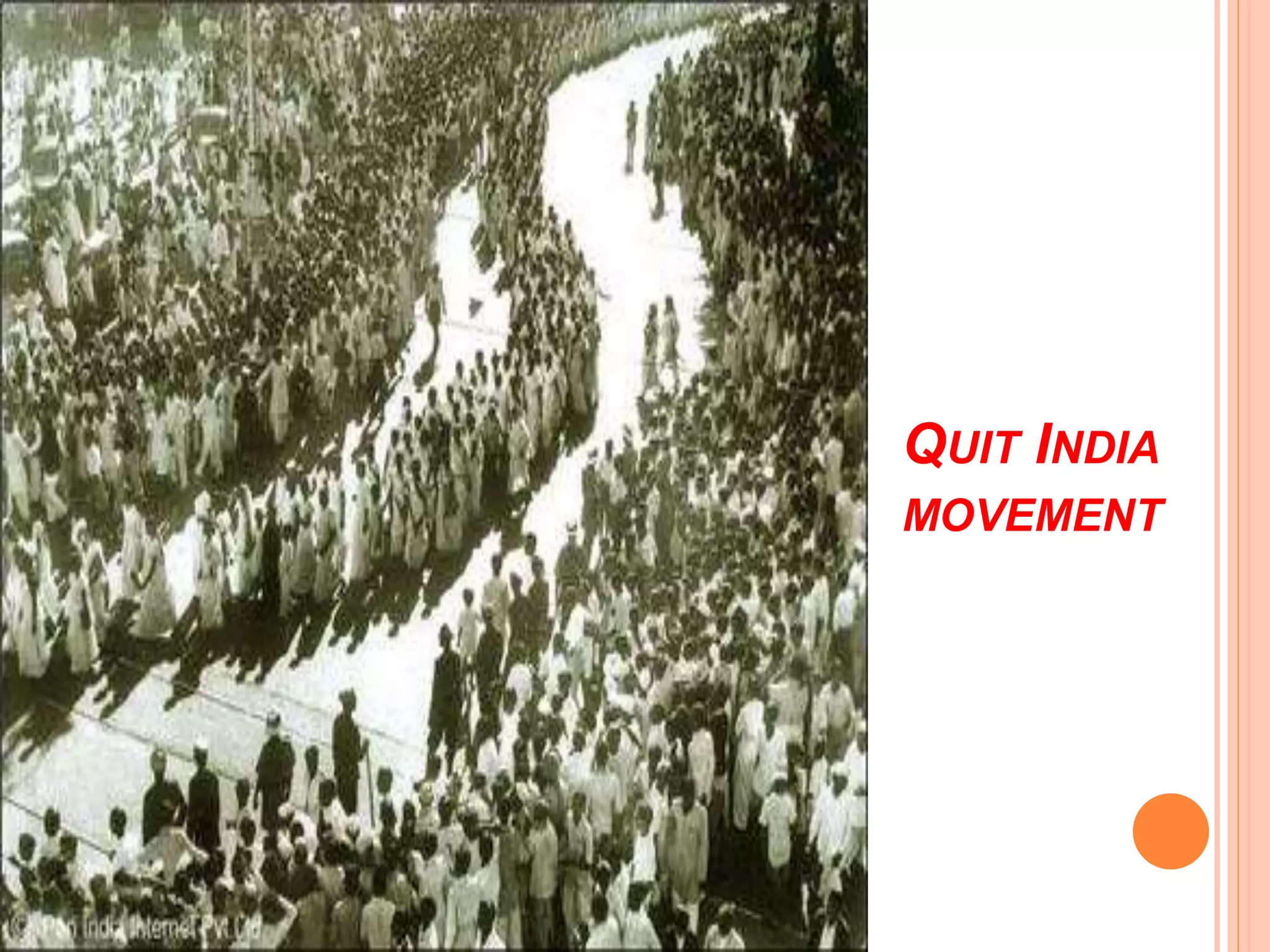

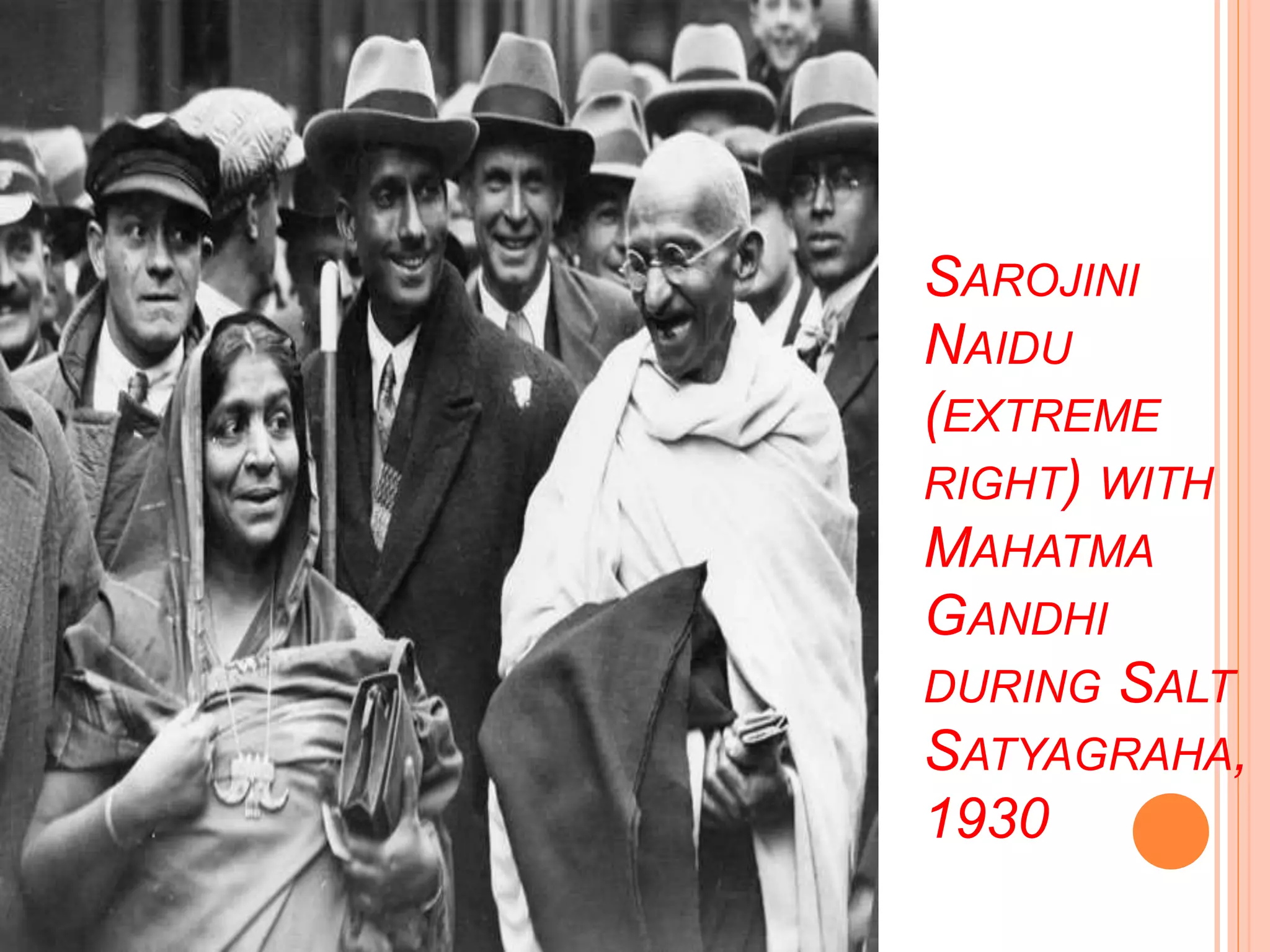
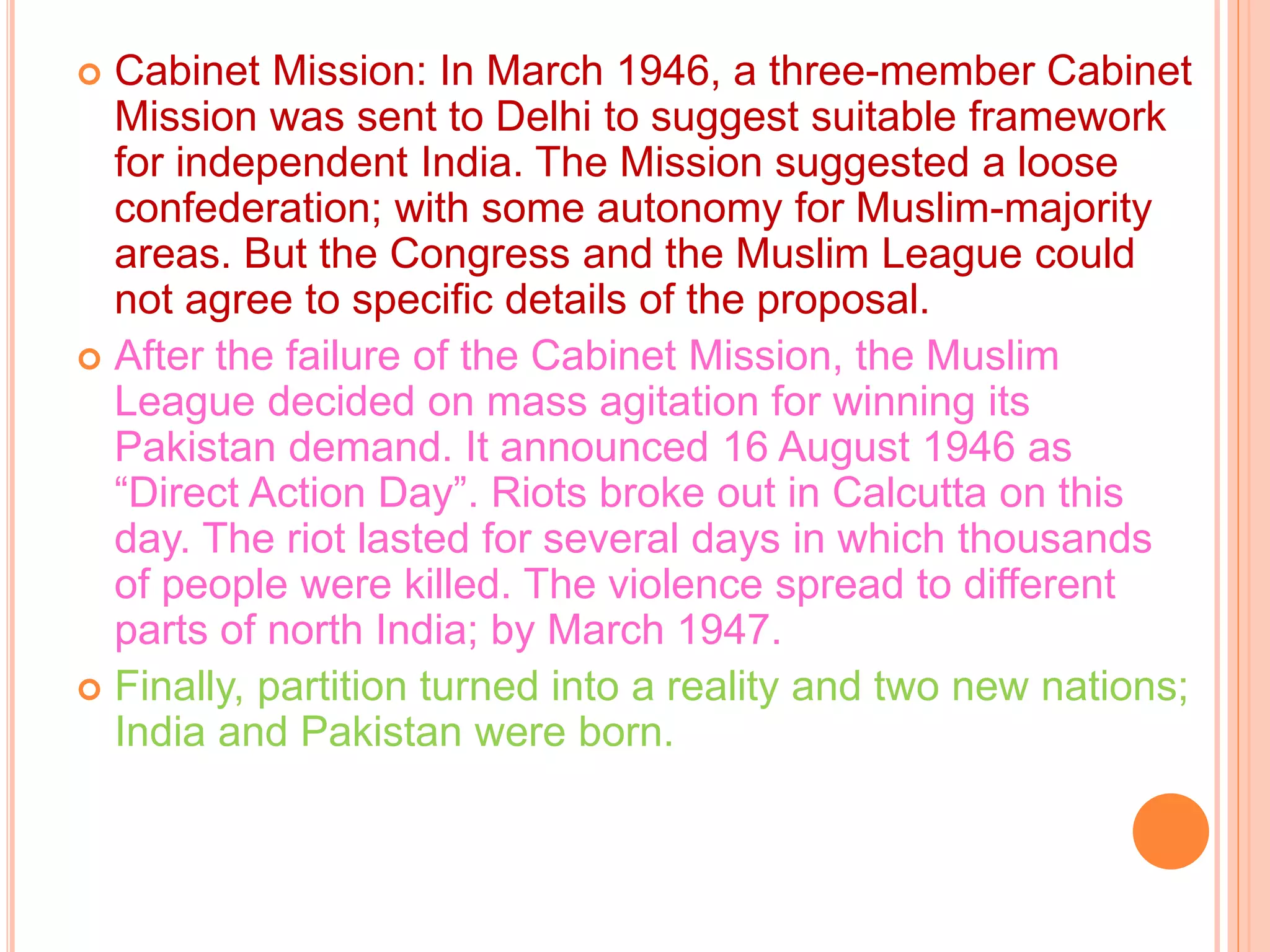
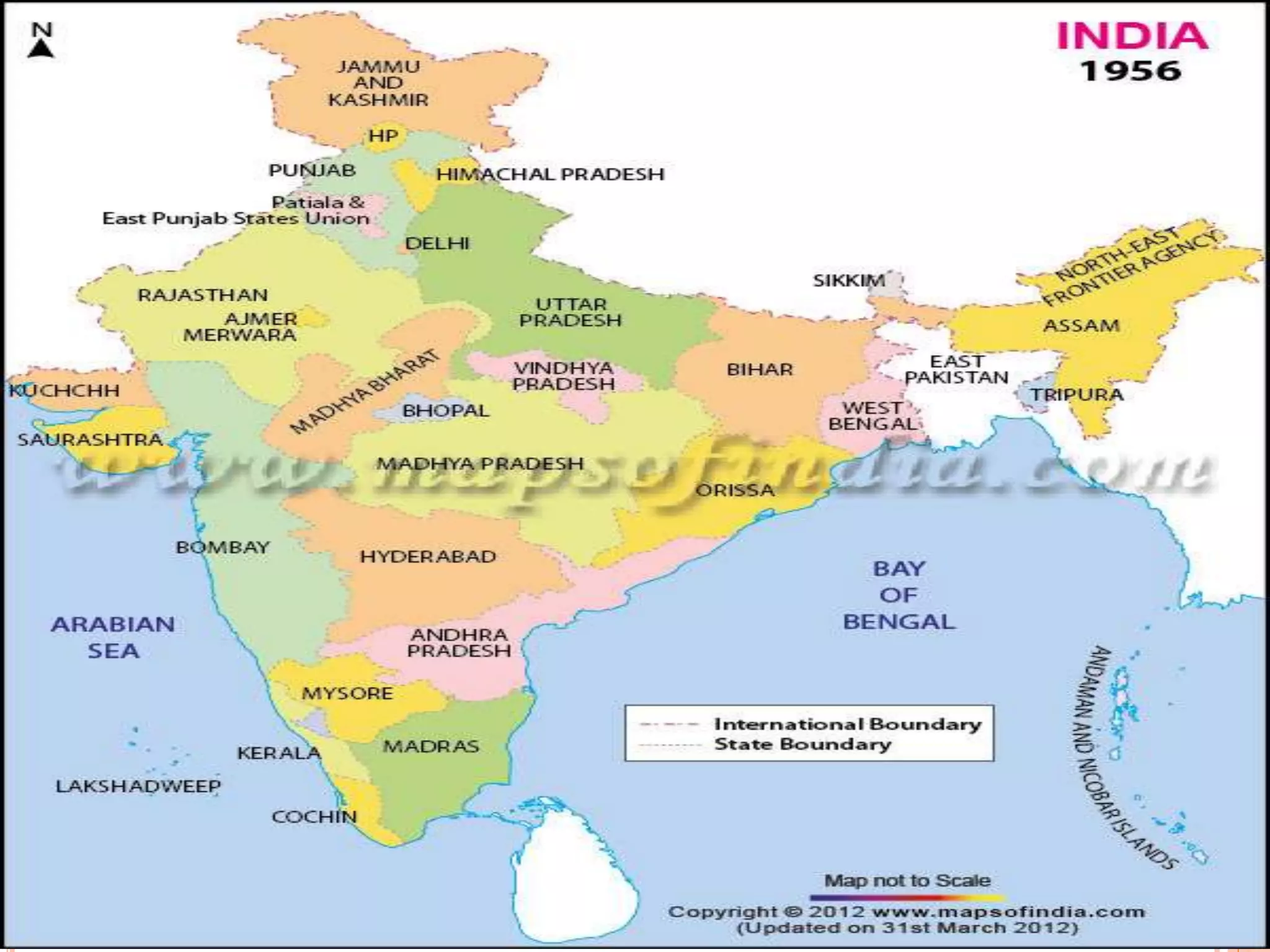
![WHAT WE HAVE UNDERSTOOD [SUMMARY]
By the 1850s, Indians from all walks of life were beginning to realize
their loss of identity and wanted to end the British rule.
In the 1870s and 1880s the dissatisfaction was intensified with new
laws imposed by the British. The Arms Act of 1878 was passed that
stopped Indians from owning arms. This was followed by the Vernacular
Press Act, which allowed the British to confiscate the assets of any
newspaper that wrote against them. The final straw came when the
British opposed the Ilbert Bill, which allowed Europeans to be tried by
Indians in court.
This led to the setting up of organizations like the Indian National
Congress, the Indian Association, the Bombay Presidency Association
and the Poona Sarvajanik Sabha. The Indian National Congress was
formed in December 1885.
The Congress, in its initial years, adopted a moderate outlook in its
demands. It demanded more Indians in high positions in the
government, the abolishment of the Arms Act, the separation of the
executive from the judiciary, and the freedom of speech and expression
for the Indians.](https://image.slidesharecdn.com/themakingofnationalmovementbyarjun-160110085048/75/The-making-of-national-movement-1870s-1947s-51-2048.jpg)
